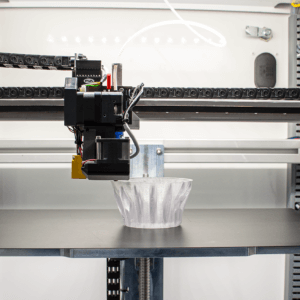
3D Printing
3D printing or additive manufacturing is the process of making a solid object from a three-dimensional digital file. This object is created by laying down many thin layers of a material in succession.

3D printing or additive manufacturing is the process of making a solid object from a three-dimensional digital file. This object is created by laying down many thin layers of a material in succession.
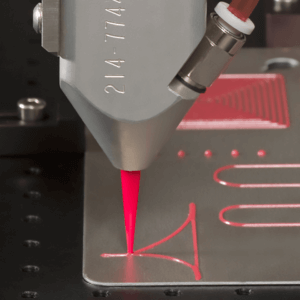
The application of a liquid adhesive to join two surfaces, such as metal, plastic, glass, rubber, or ceramic, together which forms a complete bond and transfers forces between the substrates.
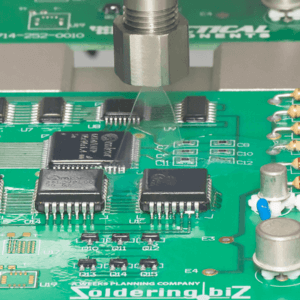
The application of a protective film or layer of liquid onto a PCB, either in selected areas or over the entire assembly. Conformal coatings are applied using an array of technologies such as atomized spray, airless film, needle dispense and jetting.
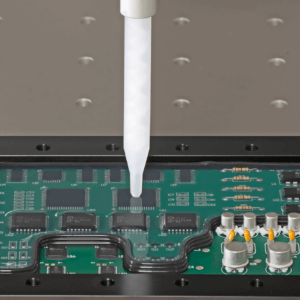
A two-step process of first dispensing a high viscosity fluid around the perimeter of a device or electronic circuitry, and then dispensing a low viscosity fluid within the perimeter to fully encase the components. The dam can be applied as a single or multi-layer bead depending on the target fill height required.
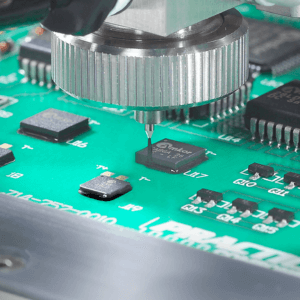
Dispensing can extend across numerous industries and applications that require dosing in an accurate and controlled manner. PVA's award winning valves and pumps are available to dispense a broad spectrum of chemistries to meet the requirements of your most demanding applications.
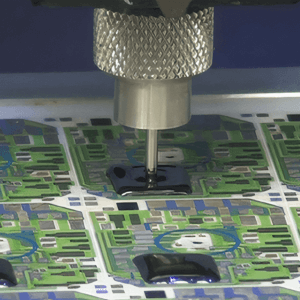
Applying an epoxy or silicone-based fluid that completely covers a defined area around a flip chip or wire bonded component. This provides mechanical shock and vibration stability, as well as environmental protection from moisture and foreign objects.
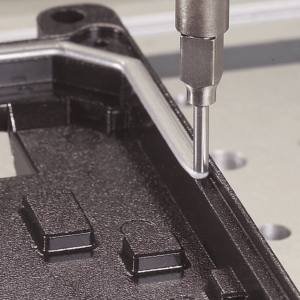
Also known as "form-in-place gasketing," this application dispenses one or two-part liquids into a groove or onto a flange that will cure to form a seal against liquids and gases. This automated process eliminates the task of assembling a die cut or pre-made gasket. Additionally, geometries can easily be modified for other designs.
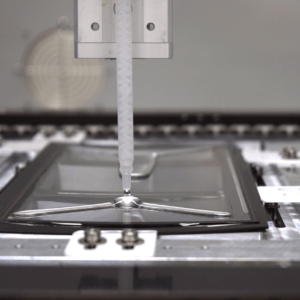
The process of applying an optically clear liquid to a digital display, such as LCD or plasma, to bond a cover glass and/or touch sensor to eliminate the air gap between each layer. This provides improved image clarity, especially in outdoor or bright light environments, improved resistance to shock and vibration, and additional protection against dust and moisture.
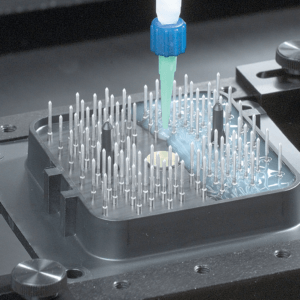
The process of filling an enclosure that holds electronic circuitry, with a liquid that when cured completely encases the unit. This provides mechanical stability during shock and vibration as well as environmental protection from moisture and foreign objects.
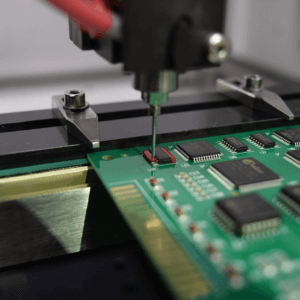
Surface Mount Adhesive (SMA), solder paste, and filled epoxies require accurate deposits to adhere SMT components to a PCB surface. Consistent dot or bead profiles are critical for bonding a broad range of components with a growing emphasis on miniaturization that is achievable with jetting valves or auger pumps.
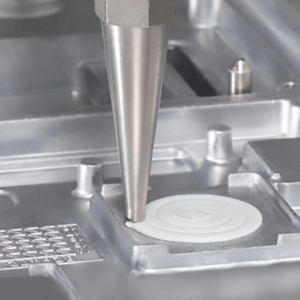
A thermal interface material ("TIM") fills gaps between mating surfaces with a substance that improves thermal conductivity beyond the air that would have otherwise filled that gap. The TIM acts as a conductive bridge that greatly improves heat transfer between between a heat-generating device (e.g. an integrated circuit) and a heat-dissipating device (e.g. a heat sink).
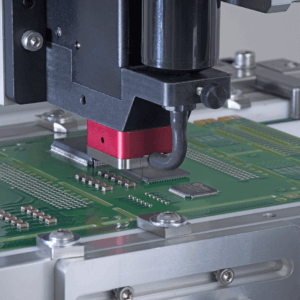
The application of a fluid along one or more edges of an electronic component, such as a flip chip or BGA type package, that flows underneath using capillary action. Underfill is used to prevent thermal mismatch between the component and the substrate, prevent moisture penetration, and to provide mechanical stability during shock and vibration.